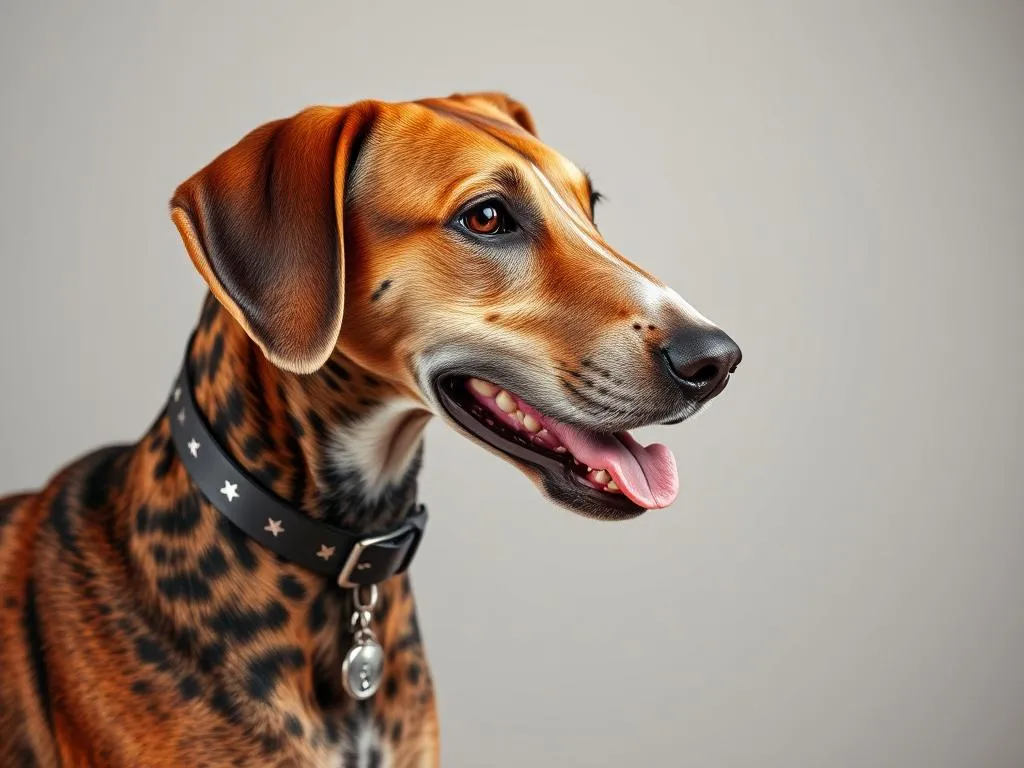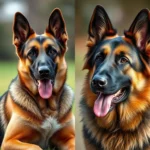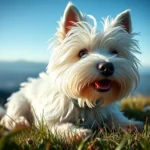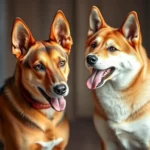
Introduction
Sighthound dog breeds are a unique category of dogs known for their exceptional speed and keen eyesight. These breeds have been revered for their hunting abilities, particularly in chasing game over open terrain. Originating from various parts of the world, sighthounds have rich histories intertwined with human civilization, often serving as companions and hunters. Their importance is highlighted in various cultures, from the majestic Saluki in the Middle East to the graceful Afghan Hound in Central Asia. This article aims to delve deep into the world of sighthounds, exploring their characteristics, popular breeds, training techniques, and care requirements.
Characteristics of Sighthound Dog Breeds
Physical Traits
Typically, sighthound dog breeds share several distinctive physical features. They possess slender, elongated bodies and long, powerful legs, allowing them to achieve remarkable speeds. The head is usually long and narrow, often characterized by a pronounced muzzle. Their eyes are large and expressive, suited for spotting prey from a distance.
Coat types among sighthounds vary, with some breeds having short, smooth coats while others boast longer, flowing fur. Common colors include fawn, brindle, black, white, and various shades of brown. The diversity in coat types and colors adds to the aesthetic appeal of these breeds.
Behavioral Traits
In terms of temperament, sighthound dog breeds are often described as friendly yet independent. They tend to form strong bonds with their families but may also display a streak of aloofness towards strangers. This independent nature stems from their historical roles as hunters, where they often had to make decisions without human guidance.
When it comes to exercise, sighthounds require ample physical activity. They thrive in environments where they can run freely, making them ideal for active families or individuals. Their energy levels can vary by breed, but most sighthounds enjoy regular bursts of high-energy play, followed by lengthy periods of rest.
Health Considerations
Like all dog breeds, sighthounds are susceptible to certain health issues. Common problems include bloat, hip dysplasia, and heart conditions. Their unique physiology, such as a lean body and low body fat, can make them more vulnerable to temperature extremes. On average, sighthounds have a lifespan ranging from 10 to 14 years, depending on the breed. Regular veterinary check-ups, a balanced diet, and proper exercise are crucial in maintaining their health.
Popular Sighthound Dog Breeds
Greyhound
The Greyhound is perhaps the most recognized among sighthound dog breeds. Originating from ancient Egypt, Greyhounds have been bred for their speed and agility. They are known for their slender build and incredible sprinting ability.
In terms of temperament, Greyhounds are gentle and affectionate, often referred to as “couch potatoes” due to their love for lounging. While they are renowned for their racing prowess, many Greyhounds are also adopted as loving companions, enjoying a quiet home life after their racing careers.
Whippet
Often compared to Greyhounds, the Whippet is a smaller breed that shares many physical characteristics. Originating in England, Whippets were bred for hunting small game. Their speed is remarkable, capable of reaching up to 35 miles per hour, making them excellent competitors in lure coursing events.
Whippets are known for their friendly and playful nature. Unlike the more reserved Greyhound, Whippets tend to be more sociable and enjoy being around people and other dogs. They require regular exercise but also appreciate downtime for relaxation.
Saluki
The Saluki, one of the oldest domesticated dog breeds, has its roots in the Middle East. Historically, these dogs were used by nomadic tribes for hunting game such as gazelles due to their incredible speed and endurance.
Salukis are known for their elegance, boasting a thin, athletic build and long legs. Their temperament is gentle and affectionate, but they can be somewhat reserved around strangers. Salukis require ample exercise and thrive in a secure environment where they can run freely.
Afghan Hound
The Afghan Hound is easily recognizable due to its long, flowing coat and distinctive appearance. Originating from the mountainous regions of Afghanistan, this breed was traditionally used for hunting large game.
With a temperament that is often described as independent and dignified, Afghan Hounds can be aloof but are also known for their affectionate nature towards their families. Grooming is a significant commitment for owners, as their long coat requires regular brushing to prevent matting and maintain its beauty.
Borzoi
The Borzoi, also known as the Russian Wolfhound, has a storied history in Russia, where it was used for hunting wolves and other large game. This breed is known for its graceful appearance and flowing coat, which can range from long and silky to slightly wavy.
Borzoi are gentle and often reserved, making them excellent family pets. They tend to bond closely with their owners but may be cautious around strangers. Like many sighthound dog breeds, Borzoi require regular exercise and enjoy open spaces to run.
Basenji
The Basenji, often referred to as the “barkless dog,” is known for its unique vocalization, which resembles a yodel. Originating from Central Africa, this breed was historically used for hunting and is recognized for its intelligence and independence.
Basenjis are curious and energetic, requiring both physical and mental stimulation. Their grooming needs are minimal, but they thrive in environments where they can explore and engage their instincts. Their unique characteristics make them both charming and challenging companions.
Training Sighthound Dog Breeds
Understanding the Nature of Sighthounds
Training sighthound dog breeds requires an understanding of their independent nature. Unlike more obedient breeds, sighthounds may not always respond to commands immediately. Their instincts often take precedence, especially when it comes to chasing after small animals or objects.
Effective Training Techniques
Positive reinforcement is the most effective training method for sighthounds. This involves rewarding desired behaviors rather than punishing unwanted ones. Treats, praise, and playtime can motivate sighthounds to learn commands and follow instructions.
Socialization is also crucial for sighthounds. Exposing them to various environments, people, and other animals from a young age can help them develop into well-adjusted adults.
Common Training Challenges
One of the main challenges with sighthound dog breeds is their strong chasing instinct. When outdoors, these dogs may become easily distracted by fast-moving objects. To mitigate this, owners can work on recall training and utilize long leashes during walks to maintain control.
Additionally, patience is key. Sighthounds may take longer to learn commands due to their independent thinking, so consistency and positive reinforcement are essential for success.
Sighthounds in Competition and Sports
Racing
Greyhound racing is perhaps the most well-known sport involving sighthounds. While it has garnered popularity, it has also faced controversies regarding the treatment of racing dogs. Many retired racing Greyhounds find new homes and become beloved pets. Other sighthound dog breeds, such as Whippets and Borzois, also participate in racing events, showcasing their speed and agility.
Lure Coursing
Lure coursing is a sport specifically designed for sighthounds, mimicking the chase of prey in a controlled environment. During lure coursing events, a mechanical lure is used to simulate the movement of a small animal, allowing dogs to sprint and compete in a safe setting. This sport benefits sighthounds by providing them with the exercise they need while allowing them to indulge their natural instincts.
Dog Shows
Sighthounds are popular participants in dog shows, where they are judged based on their conformation to breed standards. Breeds like the Afghan Hound, Saluki, and Borzoi often shine in the ring, showcasing their elegance and grace. Many sighthound owners take pride in breeding and training their dogs for these competitions.
Adoption and Care of Sighthounds
Finding a Sighthound
When considering adopting a sighthound, potential owners should research local shelters and rescue organizations dedicated to these breeds. Many retired racing Greyhounds and other sighthounds are in need of loving homes. It’s essential to assess your living situation and lifestyle to determine if a sighthound is the right fit for you.
Daily Care Requirements
Nutrition is vital for maintaining the health of sighthound dog breeds. Owners should provide a balanced diet that meets their specific needs, taking into account factors such as age, weight, and activity level. Regular exercise, including walks and playtime, is crucial for keeping sighthounds fit and happy.
Mental stimulation is equally important. Engaging activities such as puzzle toys, obedience training, and agility courses can help keep sighthounds mentally sharp and prevent boredom.
Grooming Needs
Grooming requirements vary among sighthound dog breeds. While some, like the Greyhound, have minimal grooming needs due to their short coats, others, like the Afghan Hound, require extensive grooming to maintain their luxurious fur. Regular brushing, baths, and occasional trips to a professional groomer can help keep sighthounds looking their best.
Conclusion
In summary, sighthound dog breeds are a fascinating group of dogs with unique characteristics, rich histories, and distinct personalities. Their elegance, speed, and affectionate nature make them remarkable companions. Whether you’re considering adopting a sighthound or simply want to learn more about these incredible breeds, understanding their needs and traits is essential. Responsible ownership and care will ensure that these magnificent dogs thrive in their homes, bringing joy and companionship to their families.









